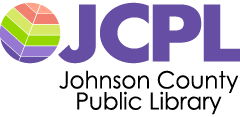
If Halloween conjures up images of kiddies going door to door trick-or-treating, you may be a little jealous of those who lived in the early 1900s. While using JCPL’s newspapers.com research engine, I learned that classic Halloween parties and mischief-making were in full swing in 1912 to the late 1940s. I expected to find little observance of the holiday, instead, I was very entertained by the research I found.
Halloween was appropriately celebrated with numerous social gatherings and masked parties. Downtown Franklin streets were crowded until late hours by merry-makers, some in costumes and some just to look on. Houses were extensively decorated with jack-o-lanterns, and crepe paper black cats, witches and goblins. Guests would enjoy refreshment in “dairy lunch style” (buffet.) Familiar offerings included cider, milk, coffee, popcorn, doughnuts, apples, pumpkin pie, marshmallows and candy. Dances, bobbing for apples, games and hayrides were part of the festivities.
Franklin College ended classes early to decorate the gymnasium for evening parties. High schools decorated gymnasiums in all parts of the county. Churches got into the spirit hosting parties for Sunday school classes in the homes of parishioners. Stores in Franklin advertised costumes for children, masks, novelties and souvenirs in seasonal window displays.
The tricksters were also a part of Halloween nights. Stern warnings from the town sheriff did not completely hold the pranks at bay. Reports of soaping of windows were very common. Other common pranks included stacking porch furniture, misplacing anything lying around loose, throwing tomatoes at cars and tipping outhouses. The boys at Franklin College in 1935 carried an outhouse to the front of women’s dorm and set fire to it leading to a tradition that is still carried out at Franklin College today. In Whiteland, a group of pranksters stabled a cow in the Whiteland M. E. church classroom overnight with the predictable consequences.
Not all pranks were harmless. By the 1950s, concern for real harm and expensive damages led to holding the parents liable for damages caused by their children. Some of the more outrageous examples included sand in the gas tank of a car, farm implements placed in middle of the highway causing accidents, large plate glass windows broken and a real estate sign jammed in the top of a car.
Reference to children trick-or-treating was not widely reported until after the WWII in the late 1940s when churches organized groups to go door to door asking for donations for the UNICEF humanitarian relief fund. Most parties and Halloween festivities in the 1900s occurred on Halloween night. The tradition of dressing in costume for Halloween was once enjoyed by adults and children equally. Today, it is mostly a children’s holiday but more adults are joining the fun again. As much as we think our world is so different, looking back at how people lived their lives, you realize we really have not changed so very much, thank goodness!


